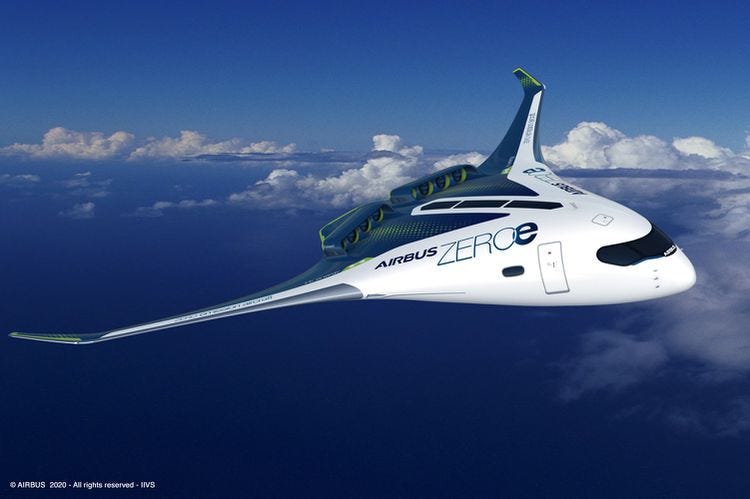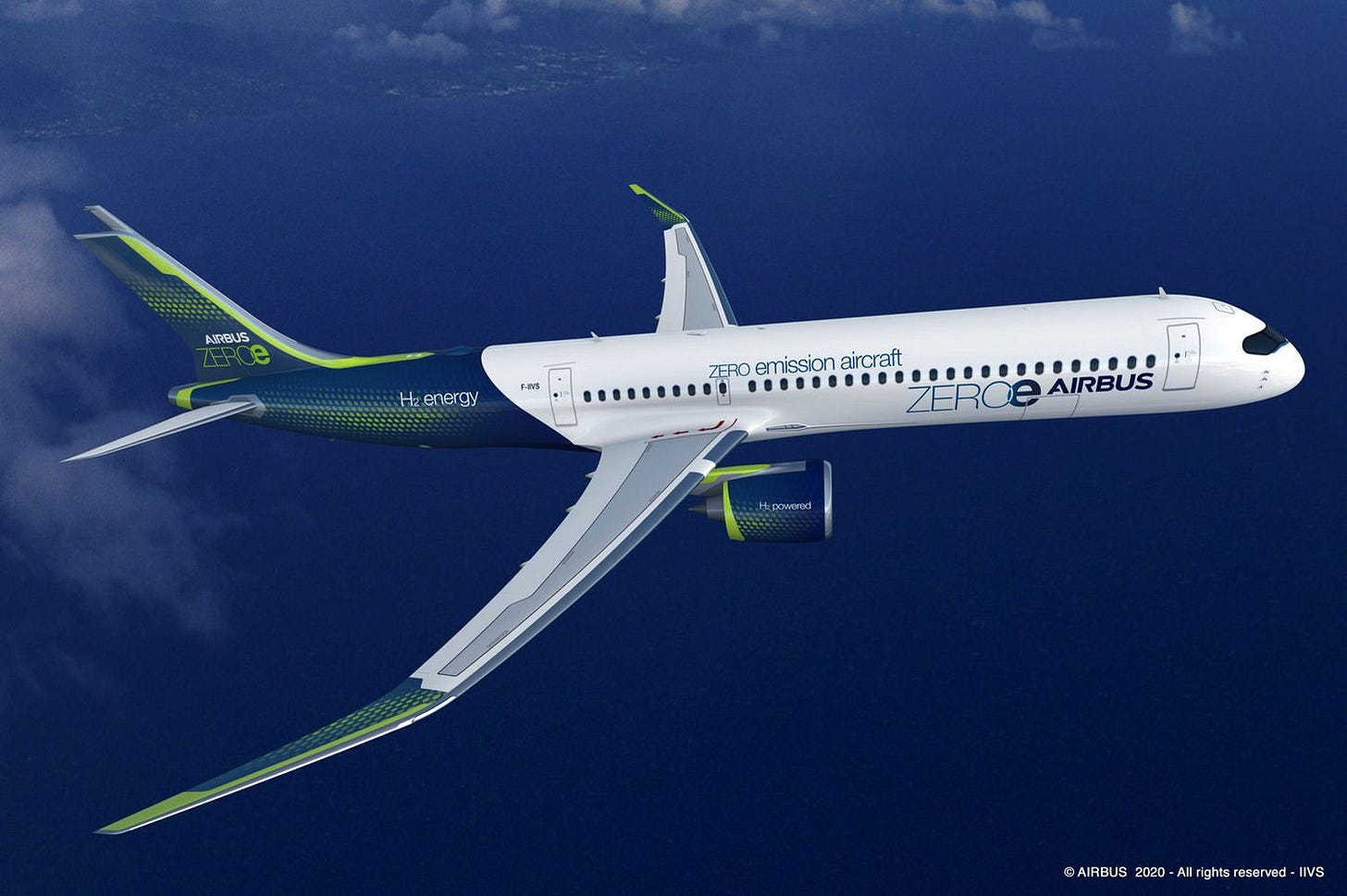Airbus "pushes back" plans for hydrogen powered planes
Told'ya so: Five years ago I said it would never happen. Here's my post from my archives.
Airbus has just “pushed back” its plans to fly planes fueled by liquid hydrogen by 2035. Now it is more like that great Mankoff New Yorker cartoon, “How about never-Is never good for you?” It was always about never, about promising the earth while they keep destroying the sky. It’s what Alex Steffen calls “predatory delay.” I wrote about this in 2020 for Treehugger. At the time, planes were grounded for the pandemic but Quantas was flying “flights to nowhere” for people who just wanted to go for a ride. From my archives:
Airbus is showing three concepts for "the world’s first zero-emission commercial aircraft, which could enter service by 2035." They all run on hydrogen, which Airbus calls a clean aviation fuel. According to the press release:
“'These concepts will help us explore and mature the design and layout of the world’s first climate-neutral, zero-emission commercial aircraft, which we aim to put into service by 2035,' said [Airbus CEO] Guillaume Faury. 'The transition to hydrogen, as the primary power source for these concept planes, will require decisive action from the entire aviation ecosystem. Together with the support from government and industrial partners we can rise up to this challenge to scale-up renewable energy and hydrogen for the sustainable future of the aviation industry.'"
The concepts are intriguing; the image at the top is "A 'blended-wing body' design (up to 200 passengers) concept in which the wings merge with the main body of the aircraft...The exceptionally wide fuselage opens up multiple options for hydrogen storage and distribution, and for cabin layout."
"A turbofan design (120-200 passengers) with a range of 2,000+ nautical miles, capable of operating transcontinentally and powered by a modified gas-turbine engine running on hydrogen, rather than jet fuel, through combustion. The liquid hydrogen will be stored and distributed via tanks located behind the rear pressure bulkhead."
There is a more conventional-looking short-haul turboprop plane running hydrogen-powered gas turbines.
The engines are all running on liquid hydrogen, and it certainly will be a challenge to scale that up. The most obvious challenge is the need for a lot of green hydrogen (electrolyzed with renewable power – more on the colours of hydrogen here). Anything else is not going to be zero-emission.
It takes about 50kWh to electrolyze 9 kilograms of water to get 1 kilogram of hydrogen. The process is not 100% efficient so that kilogram contains 39.44 kWh of energy. But as I noted in an earlier post, that's just the start. To make it liquid, It has to be compressed to 13 times the earth's atmosphere and then cooled to 21 degrees Kelvin, or -421 degrees Fahrenheit. It takes a lot of energy to run the compressors; Praxis, a manufacturer of Liquid Hydrogen, says it takes 15 kWh of electricity to make a kilogram of the stuff. So, we are sitting at 65 kWh per kg of liquid hydrogen.
So, how much electricity would it take to scale up renewables for the sustainable future of the aviation industry? I did a little spreadsheet.
Really, I don't want to throw cold H20 on this idea, and it isn't all going to happen at once, but the world uses a vast amount of jet fuel each year. Hydrogen packs almost three times as much energy per kilogram, but it would take 4.5 million gigawatt/hrs to make it through electrolysis. That's 10 times as much renewable electricity as there is in the world today. It's double the total of nuclear power. It's an insane amount of electricity.
Again, of course, this isn't all going to change over in one day in 2035. But a transition to hydrogen is a very long and expensive process, one wag suggesting, "Give us 100 years and $100 trillion dollars and we will provide you with a safe, sustainable, economically viable hydrogen economy." I'm not sure we have the time or the money.
I get criticized a lot for being a wet blanket about these things. After all, here's the world's largest plane builder showing a plan for the "sustainable future of the aviation industry.” But like so much of the hydrogen economy, it all seems like a way of maintaining the status quo by promising that someday, somehow, it will all be green and wonderful. In the meantime, let's just take a flight to nowhere.








Love the typo. Maybe by the person in charge of installing bolts at Boeing.
>>"Total renewable power in the world per year ... 440k GWh"
That's 1/6th of nuclear's power generation.
In the U.S. per year, we use 2.5 million GWh of electricity alone, to say nothing of the energy from fossil fuels for heat and transportation. Then you have the EU, China, India, and the rest of the world thrown into the mix (I care not to look up the actual energy use for each, or all.)
The idea that we can decarbonize the global energy sector just by building more solar panels and wind turbines is beyond ludicrous. The math above proves it.